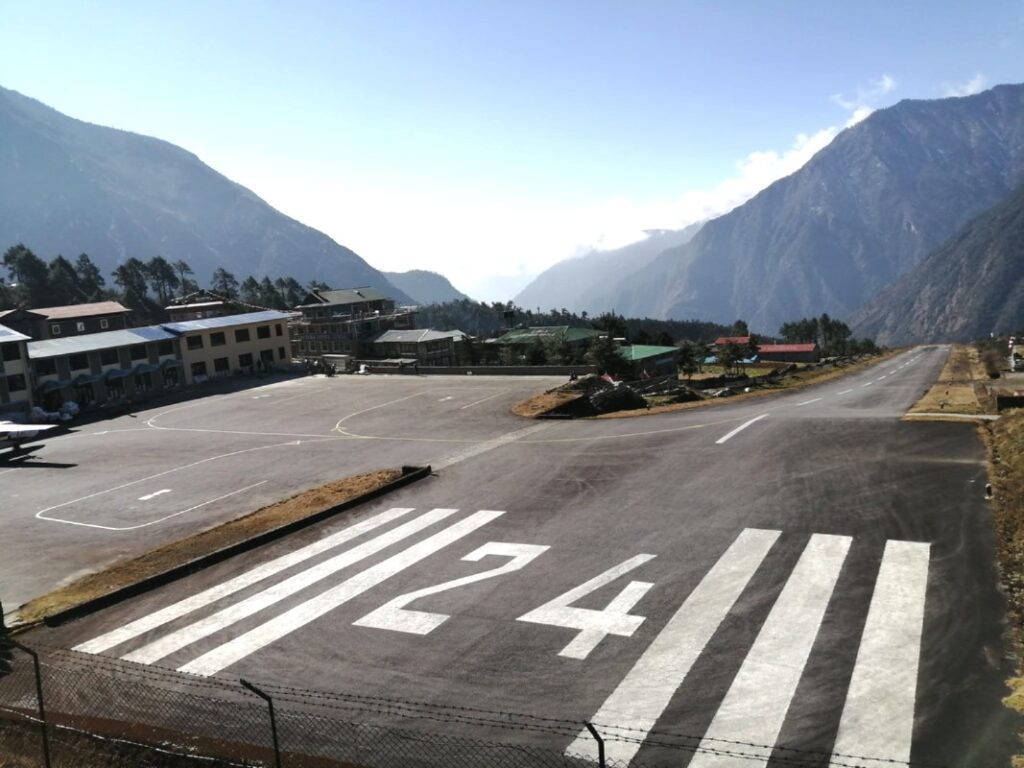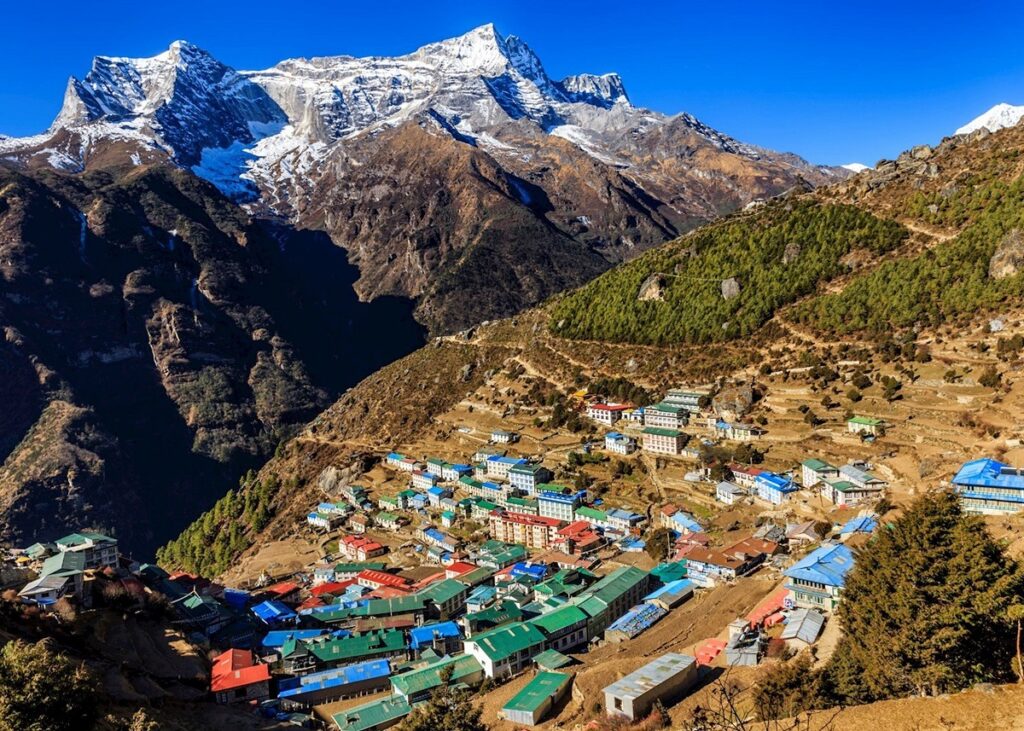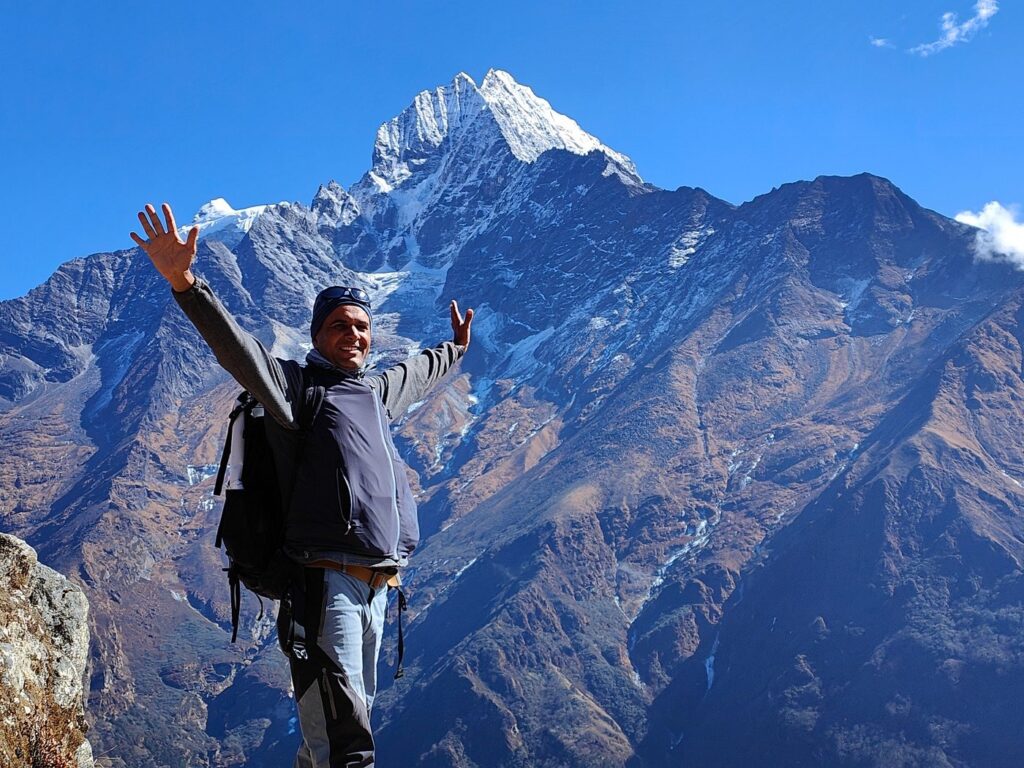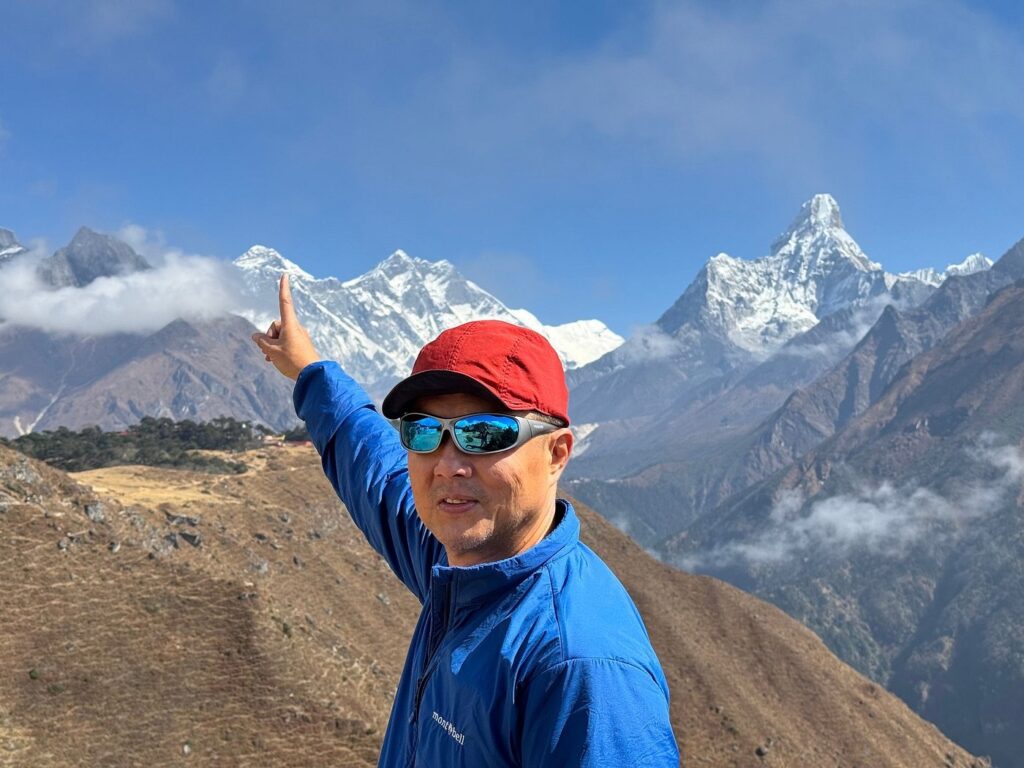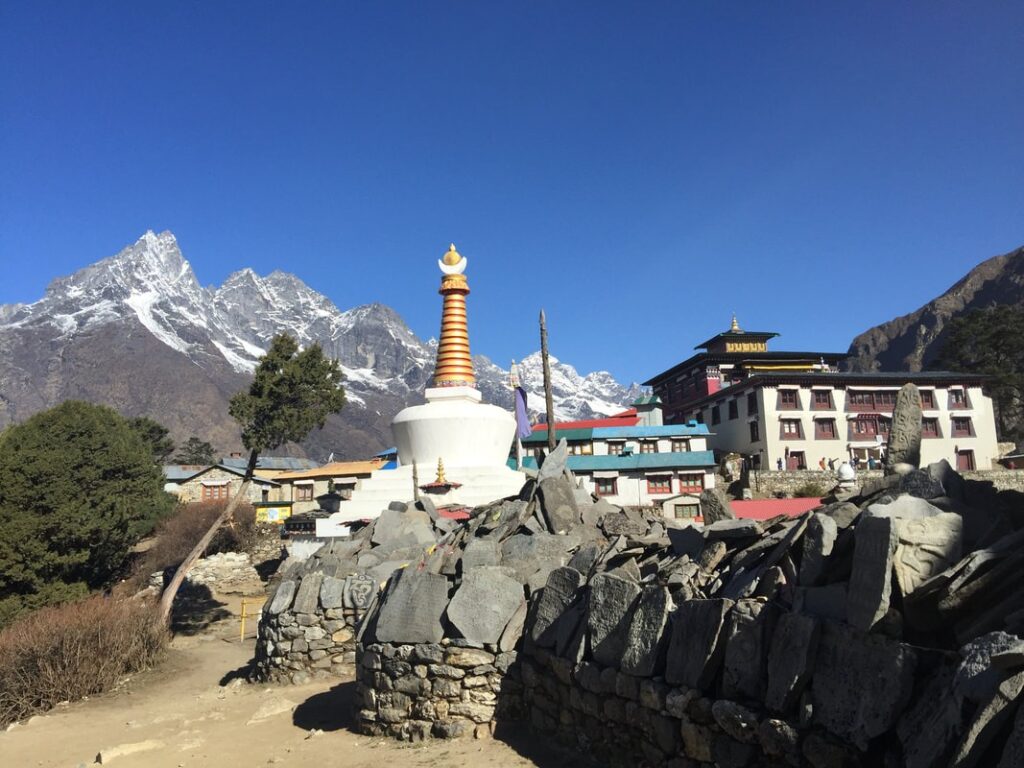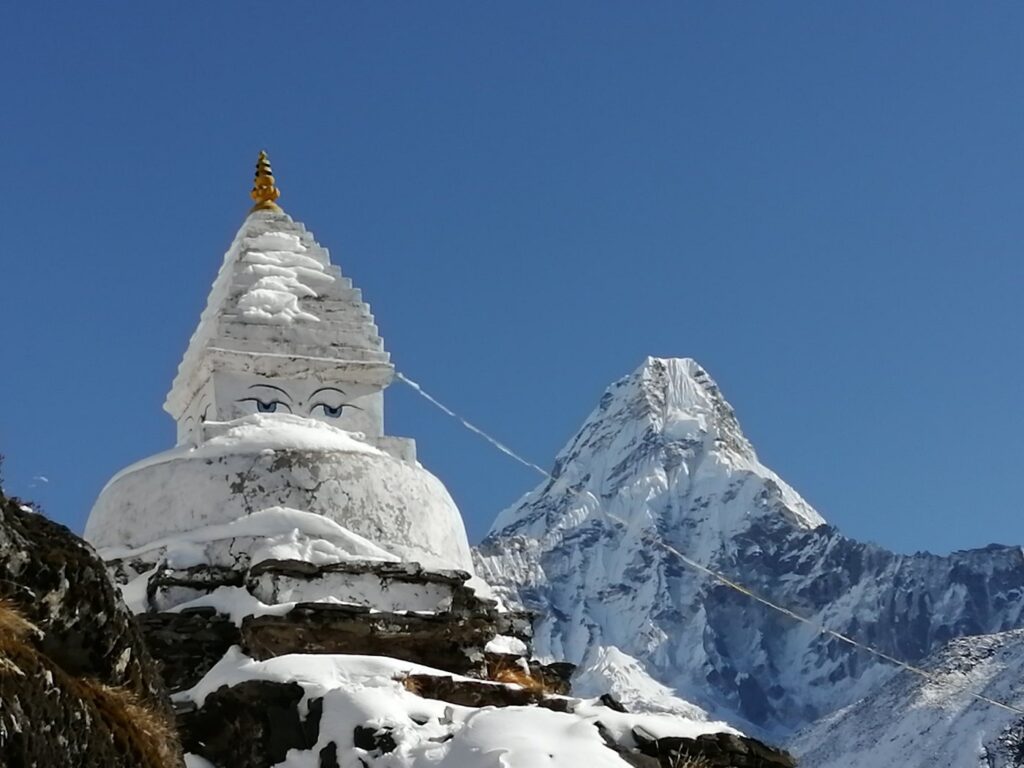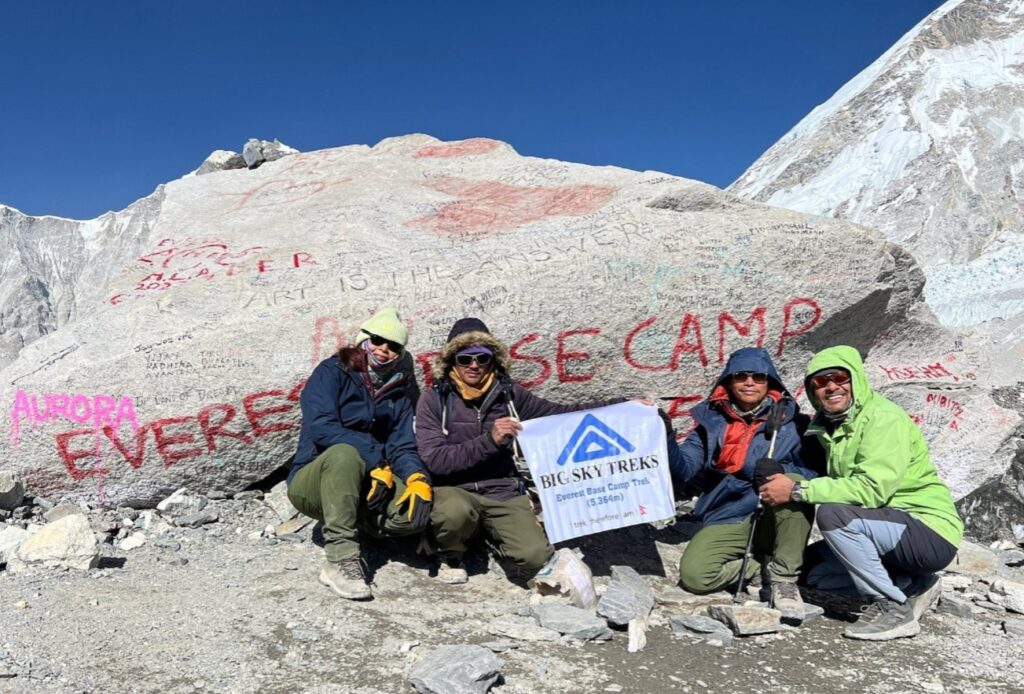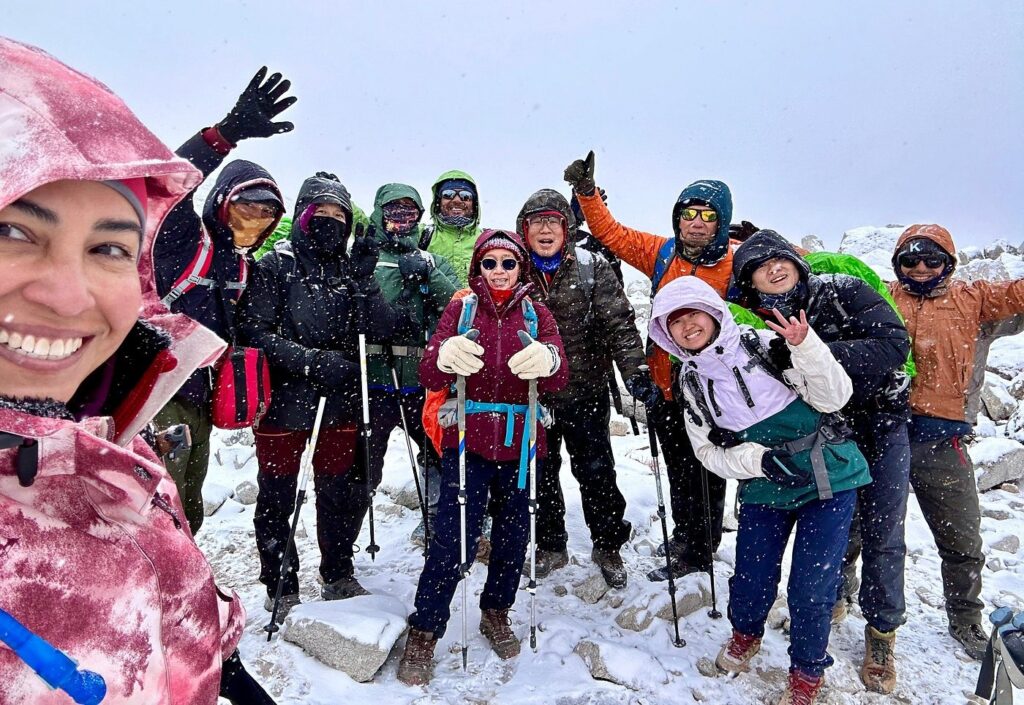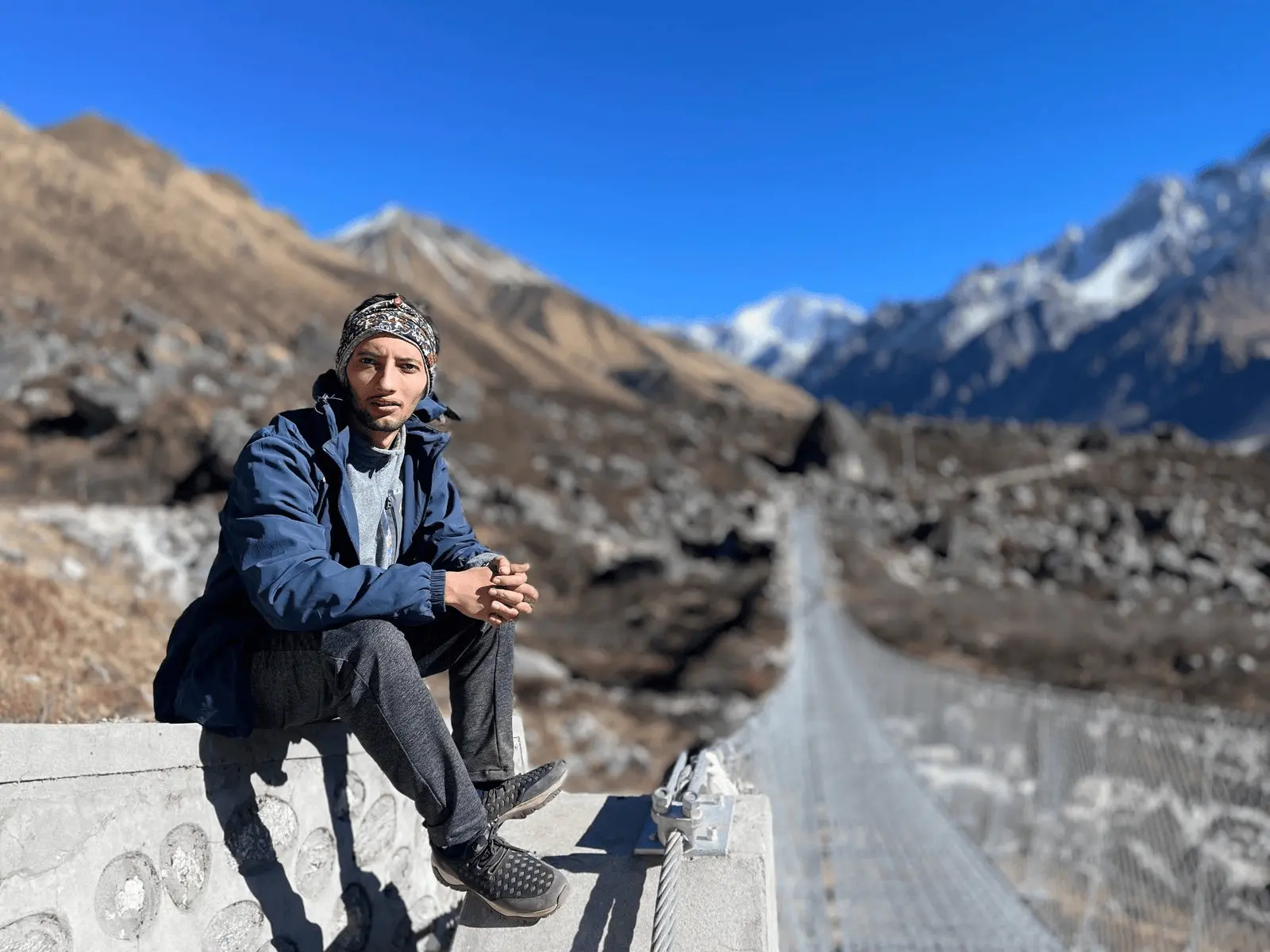Overview for Everest Base Camp Trek
The Everest Base Camp Trek is the ultimate Himalayan adventure, leading you through the heart of the Khumbu region to the foot of the world’s highest peak, Mount Everest. This iconic journey blends breathtaking mountain vistas, rich Sherpa culture, and legendary trekking trails that capture the true essence of Nepal. With every step, you walk in the footsteps of mountaineering legends while immersing yourself in one of the planet’s most awe-inspiring landscapes.
What makes this trek extraordinary is not only the view of towering peaks like Everest, Lhotse, Ama Dablam, and Nuptse but also the vibrant Sherpa villages, ancient monasteries, and warm local hospitality that turn this adventure into a cultural experience. From the bustling streets of Lukla to the serene high-altitude trails, every moment is an unforgettable connection with nature and tradition.
Perfect for passionate trekkers and nature lovers, the Everest Base Camp Trek offers more than just a destination; it’s a life-changing journey. With the expert guidance of Local Trekking Agency Big Sky Treks Nepal, you’ll experience safe, well-organized trekking while embracing the spirit of the Himalayas. I trek therefore I am – Big Sky Treks Nepal.
Trip Fact of Everest Base Camp Trek

Destination
Nepal/ Everest

Duration
16 Days

Trip Grade
Moderate

Activities
Trek and Tour

Accommodation
Hotels / Tea House

Food
Breakfast /Lunch /Dinner

Best Season
Sept to Nov / Mar to May

Max.altitude
5,645m

Transportation
Drive/ Flight

Group Size
1 to 14++

Map
Highlights of Everest Base Camp Trek
The Everest Base Camp Trek is a life-changing Himalayan journey that blends breathtaking mountain scenery, vibrant Sherpa culture, and unforgettable adventure. From standing at the base of Mount Everest to walking through iconic high-altitude trails, this trek offers unique experiences that create memories for a lifetime.
- Lukla Flight: The thrilling flight from Kathmandu to Lukla is an adventure in itself, offering stunning aerial views of the Himalayas. The short, steep runway at Lukla is often referred to as one of the most dangerous airports in the world.
- Namche Bazaar: Known as the “Gateway to Everest,” Namche Bazaar is a bustling Sherpa town and a major acclimatization stop. It offers colorful markets, bakeries, and museums, along with the first panoramic views of Everest.
- Tengboche Monastery: Located at 3,867 meters, this is the largest and most important monastery in the Khumbu region. Trekkers can witness morning prayers and enjoy breathtaking views of Ama Dablam and Everest.
- Sherpa Culture and Hospitality: The trek offers a deep dive into the rich Sherpa culture, with opportunities to visit traditional villages, interact with locals, and learn about their Buddhist traditions and way of life.
- Stunning Mountain Views: The trek provides jaw-dropping views of some of the world’s highest peaks, including Mount Everest, Lhotse, Nuptse, Ama Dablam, and Thamserku.
- Everest Base Camp (5,364 meters): Standing at the base of the world’s highest peak is a surreal experience. Trekkers can see the Khumbu Icefall and the tents of climbers preparing for their summit attempts.
- Kala Patthar (5,545 meters): The hike to Kala Patthar is one of the trek’s highlights, offering the best panoramic views of Mount Everest, especially at sunrise or sunset.
- Sagarmatha National Park: A UNESCO World Heritage Site, this park is home to diverse flora and fauna, including rare species like the snow leopard and red panda. The trails pass through lush forests, glacial rivers, and alpine landscapes.
- Teahouse Experience: Staying in cozy teahouses along the trail is a unique part of the trek. Trekkers enjoy warm meals, local hospitality, and the chance to connect with fellow adventurers.
- Sense of Achievement: Completing the Everest Base Camp Trek is a life-changing experience. The physical and mental challenges, combined with the stunning scenery and cultural immersion, make it a truly unforgettable journey.
Everest Base Camp Trek itinerary
Day 1: Arrival in Nepal and Transfer to Hotel
Upon arrival at Tribhuvan International Airport, Kathmandu, you will be warmly welcomed by Big Sky Treks Nepal’s representative. Enjoy a smooth transfer to your hotel in the city’s heart, where you can relax and prepare for your Everest Base Camp adventure. Comfortable accommodations and personalized service ensure a great start to your journey.
Day 2: City Tour and Trek Preparation
A full day of sightseeing in Kathmandu with a professional guide and private transport. Visit UNESCO World Heritage Sites: Kathmandu Durbar Square, Pashupatinath Temple, Swayambhunath, and Boudhanath Stupa. Later, meet your trek guide for a detailed briefing and shop for any missing trekking gear in Thamel.
Day 3: Fly from Kathmandu (or drive to Ramechhap and fly) to Lukla (2,800m), then trek to Phakding (2,652m) (8KM, 3 Hrs) (5 Hours’ Drive)
After a scenic flight, land in Lukla where you’ll meet and be introduced to our friendly Big Sky Treks Nepal staff. From there, the trek begins with a gentle walk to Phakding, a peaceful village along the Dudh Koshi River, perfect for acclimatization and experiencing Sherpa culture.
Day 4: Trek from Phakding to Namche Bazaar (3,440m) (10KM, 6 Hrs)
The trek from Phakding to Namche Bazaar is a challenging yet rewarding part of the Everest Base Camp route. This scenic trail crosses suspension bridges, passes through pine forests, and offers stunning Himalayan views while gradually ascending to Namche, the vibrant Sherpa hub and gateway to the Everest region.
Day 5: Acclimatization Day in Namche Bazaar
Namche Bazaar at 3,440 m serves as the first vital acclimatization stop on the Everest Base Camp Trek. Trekkers spend a day here doing “climb high, sleep low” excursions—like hiking to Everest View Hotel (3,880 m) or visiting Khumjung and Sherpa Museum. This lets your body adjust safely while enjoying mountain vistas and Sherpa culture.
Day 6: Trek from Namche Bazaar to Tengboche (3,870m) (10KM, 5 Hrs)
The trek from Namche Bazaar to Tengboche offers breathtaking Himalayan views, serene trails, and rich Sherpa culture. Hike through rhododendron forests, cross suspension bridges, and enjoy iconic sights of Everest, Ama Dablam, and Lhotse before reaching Tengboche Monastery, the spiritual heart of the Khumbu region.
Day 7: Trek from Tengboche to Dingboche (4,410m) (9KM, 6 Hrs)
The journey from Tengboche to Dingboche offers breathtaking Himalayan scenery and cultural immersion. Pass through Pangboche, admire Ama Dablam’s towering beauty, and follow the Imja Khola valley into open alpine landscapes. This scenic route blends adventure with Sherpa heritage, making it an essential highlight of the Everest Base Camp Trek.
Day 8: Acclimatization Day in Dingboche
The acclimatization day in Dingboche is a vital part of the Everest Base Camp Trek, allowing trekkers to adjust safely to the high altitude. Trekkers can hike to Nangkartshang Peak or explore Chhukung Valley, enjoying panoramic views of Everest, Lhotse, Makalu, and Ama Dablam while reducing the risk of altitude sickness.
Day 9: Trek from Dingboche to Lobuche (4,930m) (8KM, 5 Hrs.)
Trek from Dingboche to Lobuche is a breathtaking journey through rugged alpine terrain, past the Thukla memorials honoring fallen climbers, and along the Khumbu Glacier. This scenic route offers unmatched views of Ama Dablam, Nuptse, and Lobuche peaks, creating one of the most inspiring sections of the Everest Base Camp Trek.
Day 10: Trek from Lobuche to Everest Base Camp (5,364m) and back to Gorak Shep (5,164m) (12KM, 8 Hrs)
The trek from Lobuche to Everest Base Camp and back to Gorak Shep is the most thrilling part of the Everest Base Camp Trek. Hike along rugged trails with panoramic views of Everest, Nuptse, and Pumori before reaching the legendary base camp, then return to Gorak Shep for a rewarding Himalayan experience.
Day 11: Hike to Kala Patthar (5,545m) and Trek to Pheriche (4,240m) (15KM, 8 Hrs)
The trek from Gorakshep to Kala Patthar and down to Pheriche is one of the most rewarding sections of the Everest Base Camp Trek. Begin with a sunrise hike for stunning Everest views, return for breakfast, then descend through Lobuche and Thukla to Pheriche.
Here are the Major mountains seen from Kala Patthar
- Mount Everest – 8,848 m (world’s highest peak)
- Mount Lhotse – 8,516 m (4th highest)
- Mount Nuptse – 7,861 m
- Mount Changtse – 7,543 m
- Mount Pumori – 7,161 m (“Everest’s daughter”)
- Ama Dablam – 6,812 m (iconic sharply-peaked mountain)
- Cholatse – 6,440 m
- Lingtren – 6,749 m
- Khumbutse – 6,665 m
- Lho La – 6,026 m
Day 12: Trek from Pheriche to Namche Bazaar (20KM, 8 Hrs)
The trek from Pheriche to Namche Bazaar offers stunning Himalayan scenery, passing through Pangboche and Tengboche with its iconic monastery. This section of the Everest Base Camp Trek combines cultural encounters, alpine landscapes, and breathtaking mountain views, making it a memorable descent towards the vibrant Sherpa hub of Namche Bazaar.
Day 13: Trek from Namche Bazaar to Lukla (18KM, 8 Hrs)
Trek from Namche Bazaar to Lukla marks the final leg of your Everest Base Camp journey, where stunning landscapes meet warm Sherpa hospitality. Celebrate the success of your trek with our dedicated staff who join from Lukla, ensuring a joyful farewell and unforgettable memories in the heart of the Himalayas.
Day 14: Fly from Lukla (or fly to Ramechhap and Drive) to Kathmandu (140KM, 30-40 Min flight) ( 5 Hours’ Drive )
After completing the Everest Base Camp Trek, fly from Lukla or choose to fly into Ramechhap and drive to Kathmandu. Our professional staff will assist with your baggage at the airport, ensuring a smooth and hassle-free transfer. Enjoy a comfortable and well-organized journey back to the city.
Day 15: Free Day in Kathmandu
After your Everest Base Camp Trek, enjoy a well-deserved free day in Kathmandu to rest, savor authentic Nepali cuisine, and explore vibrant local flavors. Cap off your journey with a memorable farewell dinner at a cultural restaurant, experiencing traditional music and dance. Perfect for relaxing and celebrating your Himalayan adventure.
Day 16: Departure from Nepal or follow your Next trip
After your Everest Base Camp Trek, we provide reliable airport transfer timed perfectly with your flight schedule. If you have another adventure planned in Nepal, Big Sky Treks Nepal can help you continue smoothly with your next trip, ensuring a hassle-free and unforgettable experience.
Alternative Trek
Everest Base Camp Trek 14 & 15 Days
Everest Base Camp Trek 14 Days
- Day 1: Arrival in Nepal and Transfer to Hotel
- Day 2: Fly from Kathmandu (or drive to Ramechhap and fly) to Lukla (2,800m), then trek to Phakding (2,652m) (8KM, 3 Hrs) (5 Hours’ Drive)
- Day 3: Trek from Phakding to Namche Bazaar (3,440m) (10KM, 6 Hrs)
- Day 4: Acclimatization Day in Namche Bazaar
- Day 5: Trek from Namche Bazaar to Tengboche (3,870m) (10KM, 5 Hrs)
- Day 6: Trek from Tengboche to Dingboche (4,410m) (9KM, 6 Hrs)
- Day 7: Acclimatization Day in Dingboche
- Day 8: Trek from Dingboche to Lobuche (4,930m) (8KM, 5 Hrs)
- Day 9: Trek from Lobuche to Everest Base Camp (5,364m) and back to Gorak Shep (5,164m) (12KM, 8 Hrs)
- Day 10: Hike to Kala Patthar (5,545m) and Trek to Pheriche (4,240m) (15KM, 8 Hrs)
- Day 11: Trek from Pheriche to Namche Bazaar (20KM, 8 Hrs)
- Day 12: Trek from Namche Bazaar to Lukla (18KM, 8 Hrs)
- Day 13: Fly from Lukla (or fly to Ramechhap and Drive) to Kathmandu (140KM, 30-40 Min flight) (5 Hours’ Drive)
- Day 14: Departure from Nepal or follow your Next trip
Everest Base Camp Trek 15 Days
- Day 1: Arrival in Nepal and Transfer to Hotel
- Day 2: Fly from Kathmandu (or drive to Ramechhap and fly) to Lukla (2,800m), then trek to Phakding (2,652m) (8KM, 3 Hrs) (5 Hours’ Drive)
- Day 3: Trek from Phakding to Namche Bazaar (3,440m) (10KM, 6 Hrs)
- Day 4: Acclimatization Day in Namche Bazaar
- Day 5: Trek from Namche Bazaar to Tengboche (3,870m) (10KM, 5 Hrs)
- Day 6: Trek from Tengboche to Dingboche (4,410m) (9KM, 6 Hrs)
- Day 7: Acclimatization Day in Dingboche
- Day 8: Trek from Dingboche to Lobuche (4,930m) (8KM, 5 Hrs)
- Day 9: Trek from Lobuche to Everest Base Camp (5,364m) and back to Gorak Shep (5,164m) (12KM, 8 Hrs)
- Day 10: Hike to Kala Patthar (5,545m) and Trek to Pheriche (4,240m) (15KM, 8 Hrs)
- Day 11: Trek from Pheriche to Namche Bazaar (20KM, 8 Hrs)
- Day 12: Trek from Namche Bazaar to Lukla (18KM, 8 Hrs)
- Day 13: Fly from Lukla (or fly to Ramechhap and Drive) to Kathmandu (140KM, 30-40 Min flight) (5 Hours’ Drive)
- Day 14: Free Day in Kathmandu
- Day 15: Departure from Nepal or follow your Next trip
Everest Base Camp Trek Summary
The Everest Base Camp Trek is a legendary Himalayan adventure that takes trekkers from the bustling town of Lukla through traditional Sherpa villages to the foot of the world’s highest peak, Mount Everest. This trek offers stunning panoramic views of Everest, Lhotse, Ama Dablam, and other towering mountains, combining natural beauty with rich local culture in Nepal’s Khumbu region.
Along the way, trekkers experience authentic Sherpa hospitality, visit ancient monasteries like Tengboche, and pass through Sagarmatha National Park, a UNESCO World Heritage Site known for its unique flora and fauna. The journey includes gradual acclimatization, making it accessible to moderately experienced hikers ready for a high-altitude challenge.
Guided by the expert team at Big Sky Treks Nepal, the Everest Base Camp Trek promises a safe, well-organized, and unforgettable experience. This iconic trek is perfect for adventure seekers eager to explore the Himalayas’ majestic landscapes and cultural heritage.
Include Exclude in Everest Base Camp Trek-16 Days
What’s Included
- Airport / Hotel / Airport transfers by private vehicle.
- Kathmandu Hotel with breakfast.
- Duffel Bag (if you needed) (please let us know before you book the trip and remind us in kathmandu)
- Experience trekking guide
- Porters (1 porter for between 2 trekkers basis)
- Trekking Route Map (For Group Leader)
- Round trip flight ticket for Kathmandu-Lukla-Kathmandu. (Guide and Guest) (Ramechap -Lukla- Ramechap)
- Food and accommodation during the trekking in Tea house
- Sagarmatha (Everest) national park fees
- Trekker’s information management system (TIMS) card fee
- Farewell Nepali dinner in Kathmandu
- All necessary paper works, office Service charge and all government taxes
What’s Excluded
- Nepal entry visa fee, you can get Nepal visa upon arrival in the airport.
- Lunch and dinner in Kathmandu.
- International Airfare/Airport tax,
- City tour Sightseeing entry fees (if you are interested, we will arrange)
- Alcoholic drinks, bar bill and bottle beverage
- Personal expenses such as laundry, telephone calls, internet, camera battery charging Hot and cold showers.
- Travel Insurance (Essential – Should include emergency evacuation coverage while trekking up to 5500+ meters).
- Flight Cancellation and it Risky
- Personal trekking gears
- Tips for tour/ trekking staffs and driver
- Any others expenses which are not mentioned on price includes section.
Frequently Asked Questions (FAQ) About Everest Base Camp (EBC) Trek
What is the best time to trek Everest Base Camp?
The best time to trek Everest Base Camp is during the autumn season (September to November) and spring season (March to May). These months provide clear skies, stable weather, and the most stunning mountain views. Autumn offers vibrant festivals and great visibility, while spring showcases blooming rhododendrons and warmer temperatures. Winter and monsoon seasons are less popular due to extreme cold and heavy rainfall.
How difficult is the Everest Base Camp Trek?
The Everest Base Camp trek is considered moderately challenging. It involves long daily hikes at high altitudes, reaching up to 5,364 meters at Base Camp itself. While technical climbing skills are not required, trekkers should have good physical fitness and stamina. Proper acclimatization days are essential to avoid altitude sickness. Beginners with reasonable fitness can complete the trek with experienced guides.
How long does the Everest Base Camp Trek take?
Typically, the full Everest Base Camp trek takes about 12 to 14 days, including acclimatization days at key points like Namche Bazaar and Dingboche. These rest days help your body adjust to the altitude and reduce the risk of altitude sickness. The trek starts with a flight to Lukla and follows a gradual ascent through picturesque villages and valleys.
Do I need a guide for Everest Base Camp?
While not mandatory, hiring a professional guide from Big Sky Treks Nepal is highly recommended. Guides ensure your safety, assist with altitude issues, provide cultural insights, and manage all logistics, including permits and accommodation. Their local knowledge enhances your experience and makes the trek smoother and more enjoyable.
What permits are required for the trek?
To trek in the Everest region, you must have a TIMS (Trekkers’ Information Management System) card and a Sagarmatha National Park permit. These permits are essential for conservation and safety and can be arranged easily through Big Sky Treks Nepal. Carrying valid permits is mandatory and checked regularly along the trail.
Is altitude sickness a concern on the EBC trek?
Altitude sickness is a common concern on the Everest Base Camp trek due to the rapid ascent to high elevations. Symptoms can include headaches, nausea, and dizziness. To minimize risks, the itinerary includes rest and acclimatization days, and trekkers are advised to stay hydrated and follow their guide’s instructions carefully. Immediate descent is necessary if severe symptoms occur.
What kind of accommodation is available?
Accommodation along the Everest Base Camp trail consists mainly of teahouses—basic lodges run by local families. These offer simple rooms with beds, shared bathrooms, and hearty meals. While facilities are modest, they provide a cozy atmosphere and a chance to experience Sherpa hospitality firsthand.
Can I use my phone and internet on the trek?
Mobile coverage and internet access are available in major villages like Namche Bazaar and Lukla, often through local SIM cards or Wi-Fi at teahouses. However, connectivity becomes limited or unavailable at higher elevations, so plan accordingly. Staying connected is possible but not guaranteed throughout the trek.
What should I pack for the Everest Base Camp Trek?
Packing for EBC requires layered clothing to manage cold nights and warm days, sturdy trekking boots, a quality sleeping bag, and essentials like water purification tablets, sunscreen, sunglasses, and trekking poles. Weather can be unpredictable, so preparing for rain, snow, and sun is important. Packing light yet smart ensures comfort on the trail.
How do I get to the starting point of the trek?
Most trekkers begin the Everest Base Camp trek by taking a scenic flight from Kathmandu to Lukla, a small mountain airstrip known for its dramatic approach. From Lukla, the trek starts with a gentle hike to Phakding, then continues through the beautiful Khumbu Valley. Big Sky Treks Nepal arranges all flights, transfers, and permits to make your journey hassle-free.
Why Choose Big Sky Treks for Everest Base Camp (EBC) Trek
Big Sky Treks Nepal offers personalized, expert-guided Everest Base Camp treks designed to deliver an authentic and unforgettable Himalayan experience. Our experienced team ensures your safety, comfort, and smooth journey from Kathmandu to the heart of the Khumbu region, making your dream trek hassle-free and inspiring.
We prioritize cultural immersion, connecting you with Sherpa traditions, local communities, and breathtaking natural beauty. Our carefully planned itineraries allow proper acclimatization and flexible pacing so you can enjoy every moment without rushing, all while exploring iconic sites like Namche Bazaar and Tengboche Monastery.
Choosing Big Sky Treks means joining a trusted, local operator committed to responsible tourism and sustainable trekking practices. With our deep knowledge, dedicated guides, and warm hospitality, your Everest Base Camp adventure becomes more than a trek—it becomes a life-changing journey.
I trek therefore I am – Big Sky Treks Nepal.
Additional Information About Annapurna Base camp Trek
Why Everest Base Camp Trek is a Must-Do Trek?
Everest Base Camp Trek is one of the most iconic and rewarding trekking experiences in the world. It offers trekkers breathtaking views of Mount Everest and the surrounding Himalayan giants, providing a unique chance to connect deeply with some of the most spectacular natural landscapes on earth.
The trail takes you through traditional Sherpa villages, ancient monasteries, and rugged mountain terrain, giving a rare glimpse into the rich culture and spiritual heritage of the Khumbu region. Along the way, trekkers experience warm local hospitality and vibrant mountain life that enriches the journey beyond the stunning scenery.
This trek is perfect for those seeking a challenging but fulfilling adventure, combining physical endurance with cultural discovery. It offers an unforgettable opportunity to explore the roof of the world and create memories that last a lifetime.
Who Can Participate in the Everest Base Camp Trek?
The Everest Base Camp Trek welcomes anyone with a reasonable level of fitness and a passion for adventure. No technical climbing skills are needed, but trekkers should be prepared for high-altitude hiking and changing weather. It suits beginners with some trekking experience as well as seasoned hikers seeking Himalayan exploration.
Age is flexible — from young adults to seniors — as long as proper acclimatization, physical readiness, and a positive attitude are maintained. Careful preparation helps ensure a safe and enjoyable trekking experience at high elevation.
Whether traveling solo, as a couple, or in groups, this trek offers a once-in-a-lifetime chance to see Mount Everest’s grandeur and experience Sherpa culture firsthand. Proper guidance and planning make the journey unforgettable.
What to Pack for Everest Base Camp Trek?
Packing smart is essential for a successful Everest Base Camp Trek. Focus on layering lightweight, moisture-wicking clothes to stay comfortable through changing weather conditions. Don’t forget sturdy trekking boots, warm insulated jackets, and a reliable sleeping bag to tackle the high-altitude chill.
Besides clothing, carry important gear like a good-quality daypack, trekking poles, water purification tablets, and personal first-aid supplies. Sunglasses, sunscreen, and a headlamp are must-haves for safety and comfort along the trail. Packing light but prepared ensures you enjoy every step of this epic Himalayan journey.
With expert guidance from Big Sky Treks Nepal, your packing list will be tailored to maximize comfort and safety. We help you prepare thoroughly, so you can focus on the breathtaking adventure ahead without worries.
Best Time to Trek Everest Base Camp (EBC)
Seasonal Breakdown
1. Autumn (September – November) – Peak Season
Autumn is the most popular and ideal time for the Everest Base Camp Trek. Clear skies, stable weather, and moderate temperatures provide spectacular views of Everest, Lhotse, Ama Dablam, and surrounding peaks. The vibrant local festivals and lively Sherpa culture add rich cultural experiences during this season.
2. Spring (March – May) – Second Best Season
Spring offers warm weather, blooming rhododendron forests, and excellent mountain visibility. The colorful trails and fresh mountain air create perfect conditions for trekking and photography. This season is great for those who want to enjoy nature’s rebirth while exploring the Everest region.
3. Winter (December – February) – Quiet and Crisp
Winter trekking to Everest Base Camp means fewer crowds and crisp, clear views of snow-covered peaks. Temperatures drop
significantly, especially at higher elevations, so proper cold-weather gear is essential. This season suits trekkers seeking solitude and
pristine, snowy landscapes.
4. Monsoon (June – August) – Lush and Less Crowded
Monsoon season brings heavy rainfall, making trails slippery and sometimes challenging. However, the region turns lush green, and there are fewer trekkers on the route. This time is recommended for experienced trekkers who enjoy peaceful trails and don’t mind occasional rain and limited visibility.
Everest Base Camp Trek Weather and Temperature by Month
| Everest Base Camp Trek Weather and Temperature by Month | ||||
| Month | Temperature at EBC (5,364m) | Weather Condition | Trail Condition | Highlights |
| January | -15°C to -5°C | Cold, clear skies | Snowy and icy trails | Quiet trails, crystal-clear mountain views |
| February | -12°C to -3°C | Cold, gradually warming | Snow and ice patches | Fewer trekkers, peaceful trekking |
| March | -7°C to 2°C | Warming, occasional snowfall | Improving trails, some mud | Start of rhododendron bloom, good visibility |
| April | -3°C to 6°C | Mild, mostly clear | Dry and stable trails | Peak rhododendron bloom, vibrant scenery |
| May | 0°C to 9°C | Warm, occasional showers | Mostly dry trails | Best spring trekking, colorful flora |
| June | 2°C to 11°C | Start of monsoon, heavy rains | Slippery and muddy trails | Lush green landscapes, fewer trekkers |
| July | 3°C to 12°C | Monsoon peak, frequent rain | Difficult, slippery sections | Dense forests, quiet trails |
| August | 3°C to 11°C | Monsoon tapering off | Improving but muddy trails | Refreshing greenery, less crowded |
| September | 0°C to 10°C | Clear skies, mild temperatures | Dry and firm trails | Start of peak season, stunning views |
| October | -2°C to 8°C | Best weather, clear and dry | Excellent trail conditions | Peak trekking season, spectacular mountain scenery |
| November | -5°C to 3°C | Cold but clear | Dry, firm trails | Quiet trails, beautiful sunsets |
| December | -13°C to -4°C | Cold and crisp | Snowy and icy | Serene environment, crystal-clear views |
Altitude Profile of Everest Base Camp Trek
The Everest Base Camp Trek begins with a scenic flight to Lukla (2,860m), followed by a gentle trek to Phakding (2,610m). From there, the trail ascends to the bustling Sherpa hub of Namche Bazaar (3,440m), where trekkers acclimatize and enjoy panoramic Himalayan views before continuing higher.
After Namche, the journey leads to Tengboche (3,860m), famous for its monastery and stunning mountain backdrop, then on to Dingboche (4,410m) for another acclimatization stop. The trail continues through the high alpine landscape to Lobuche (4,910m) and then to Gorak Shep (5,170m), the final village before Everest Base Camp.
The trek culminates at Everest Base Camp (5,364m), the iconic destination at the foot of the world’s highest peak, followed by a climb to Kala Patthar (5,550m) for the best close-up views of Mount Everest. With proper acclimatization and expert guidance from Big Sky Treks Nepal, this altitude profile ensures a safe and rewarding Himalayan adventure.

Food and Drinks on Everest Base Camp Trek
Food and drinks on the Everest Base Camp Trek are simple, freshly prepared, and designed to keep you energized for the challenging trail. Teahouses along the route offer traditional Nepali meals and a few international dishes, ensuring trekkers enjoy warm, filling, and safe meals throughout the journey.
Breakfast Options
- Tibetan bread served with honey or jam
- Pancakes or porridge with seasonal fruits
- Toast, omelets, and boiled eggs
- Muesli with milk or tea
Lunch and Dinner Options
- Dal Bhat (Traditional Nepali Meal): Steamed rice, lentil soup, seasonal vegetables, and pickles with unlimited refills—perfect for trekkers.
- Fried rice, noodles, or pasta with vegetables or eggs
- Potato dishes (boiled, fried, or in curry) for quick energy
- Hearty soups such as garlic soup, helpful for altitude adaptation
Snacks
- Energy bars, dry fruits, and biscuits available in many villages
- Fresh bakery items in larger villages like Namche Bazaar
Drinks
- Hot drinks: Tea (milk, lemon, ginger, masala), coffee, and hot chocolate are widely available
- Safe drinking water: Use water purification tablets or buy boiled water from teahouses
- Bottled water: Available for purchase but more expensive at higher altitudes
- Avoid alcohol: It dehydrates the body and slows acclimatization
Special Notes
- Food variety decreases at higher altitudes
- Vegetarian meals are widely available and recommended for better digestion
- Carry a personal water purification method to save costs and reduce plastic waste
Training and Preparation for Everest Base Camp Trek
The Everest Base Camp Trek is a challenging yet rewarding adventure that requires proper training, preparation, and planning to ensure a safe and enjoyable experience. By focusing on physical fitness, mental endurance, and essential gear, you can conquer the Himalayan trails with confidence. With Big Sky Treks Nepal, expert guidance and preparation tips will help you achieve your trekking goal while making the journey unforgettable.
Training and Preparation Tips
- Cardio Training – Build stamina with regular aerobic exercises like running, cycling, swimming, or brisk walking to improve heart and lung capacity.
- Strength Training – Focus on leg, core, and upper body strength through squats, lunges, planks, and weight training to handle steep ascents and descents.
- Hiking Practice – Do practice hikes with a loaded backpack to simulate real trekking conditions and get used to carrying your gear.
- Altitude Acclimatization – Learn about altitude sickness prevention, follow a gradual ascent plan, and stay hydrated to adapt safely to high elevations.
- Mental Preparation – Prepare mentally for long trekking days and unpredictable weather; a positive mindset is key to success.
- Gear Familiarization – Break in your trekking boots, test your clothing layers, and ensure all equipment fits and functions properly before the trek.
- Flexibility and Balance – Include yoga or stretching exercises to improve flexibility and balance for uneven Himalayan trails.
- Nutrition and Hydration – Maintain a balanced diet and practice drinking plenty of water to stay energized and reduce fatigue.
- Emergency Readiness – Familiarize yourself with basic first aid, medications, and health precautions needed for high-altitude trekking.
- Guided Support – Trek with experienced guides from Big Sky Treks Nepal for safe navigation, expert advice, and a well-organized adventure.
Gallery
